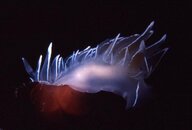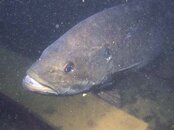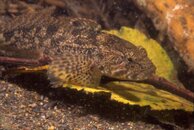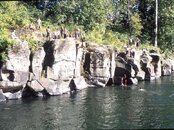I use my hands to propel myself because I am a paraplegic.
I have my camera (Canon G1X & Sea and Sea YS-D1 flash) attached to my BCD via a D ring and cord.
I was intending to mount the video light to the camera tray and video with the light and camera pointing in the same direction.
I am intending to have a small light as backup in my pocket.
I am also intending to have a light mounted on my head to shine generally where I am looking. Three lights total (not including the strobe). I would switch the video light on when I start taking video.
I'm thinking that I can ingress into the water and swim to a general area and then take hold of the camera/light and take some video.
Since I never dove at night, the darkness/headlamp issue is the item for me to work through/test.
I also had heard about the helmet/bungee cord. I was just wondering what others might recommend and can advise me on what to expect when using a head mounted light.
Will it be falling off much or pointing in the wrong direction/interfere with the mask?
Thanks for all the replies. I realize that I will just have to try it and see what happens.
I have my camera (Canon G1X & Sea and Sea YS-D1 flash) attached to my BCD via a D ring and cord.
I was intending to mount the video light to the camera tray and video with the light and camera pointing in the same direction.
I am intending to have a small light as backup in my pocket.
I am also intending to have a light mounted on my head to shine generally where I am looking. Three lights total (not including the strobe). I would switch the video light on when I start taking video.
I'm thinking that I can ingress into the water and swim to a general area and then take hold of the camera/light and take some video.
Since I never dove at night, the darkness/headlamp issue is the item for me to work through/test.
I also had heard about the helmet/bungee cord. I was just wondering what others might recommend and can advise me on what to expect when using a head mounted light.
Will it be falling off much or pointing in the wrong direction/interfere with the mask?
Thanks for all the replies. I realize that I will just have to try it and see what happens.










